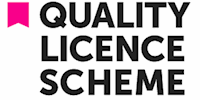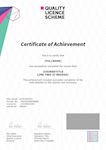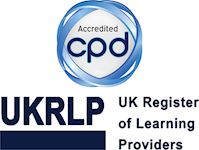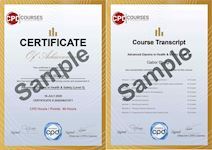Child Protection Course
CPD Diploma Level 5 | *FREE PDF Certificate* Tutor Support & Exam | 90 CPD Credits | Free Child Psychology Course
Staff Training Solutions
Summary
- Exam(s) / assessment(s) is included in price
- Tutor is available to students
Overview
Child Protection
Diploma in Child Protection Level 5. CPD Accredited Child Protection Diploma with 90 CPD points available without extra study. This Child Protection course comes with easy to understand e-learning study materials.
Child Protection
Child Protection is a subject that must be both taken seriously and prioritised by those who come into contact with children regularly in any capacity. Recent studies suggest that while the statistical probability of a child being neglected or abused is relatively low, mistreatment remains rife in today’s society. Child Protection is a collective responsibility, shared by each and every individual who works with children, or comes into close content with them on a regular basis. From teachers to educational support staff to nurses to carers, Child Protection is only effective when everyone plays their part. Every child has the right to a safe, nurturing and supportive upbringing, without the threat or fear of any form of physical or emotional abuse.
Child Protection
This exclusive Child Protection Course is ideal for anyone who works with children in any capacity. Whether pursuing a career as a specialist care worker or simply looking to improve your understanding of Child Protection, this accredited online course comes highly recommended. Key topics covered include an overview of the six primary safeguarding principles, the objectives of child safeguarding, who takes responsibility for Child Protection and how to identify the potential warning signs of neglect or abuse. Enjoy the freedom to study at a time and pace to suit your lifestyle, with no deadlines or time restrictions imposed. Sign up online and get started in minutes, or call anytime to discuss this accredited Child Protection course in more detail.
Achievement
CPD
Course media
Description
Child Protection
Units Objectives
- Discuss the problems of childhood
- Identify the causes and development of fears in children and adults.
- Provide a detailed definition as to what child protection means
- Understand the importance of proactivity in child protection
- Take practical steps top ensure children are safeguarded from harm
- Understand the most important terminology in child protection
- Discuss the long-term effects of various types of abuse
- Draw distinctions between the different types of abuse and neglect
- Discuss the various types of abuse and their potential consequences
- Identify some of the most common indicators of abuse
- Distinguish between the different signs and symptoms of different kinds of maltreatment
Safeguarding Children has 09 units as detail below:
Unit 1 What is Child Protection
- Definition of Child Protection
- Who Needs Protecting?
- The Importance of Child Protection
- Understanding Child Protection
- Creating a protective environment for children
- Roles and responsibilities in the protection of children
- Child protection system in the UK
- Child protection system in England
- Child protection system in Wales
- Child protection system in Northern Ireland
- Child protection system in Scotland
- Child Development
- What are Positive and Negative Factors for Child Development?
- Factors That Promote Growth
- Plus More
Unit 2 Understanding Child Maltreatment
- Types of Child Maltreatment
- What is Abuse?
- Exploitation
- Child Trafficking
- Violence
- Physical Abuse
- Sexual Abuse
- Emotional Abuse
- Neglect
- Impact of Maltreatment on Children
- Plus More
Unit 3 Identifying Different Types of Abuse
- Identifying the Various Types of Abuse
- Physical Abuse
- Emotional Abuse
- Sexual Abuse
- Physical Neglect
- Signs and Symptoms of Abuse
- Plus More
Unit 4 Consequences of Child Maltreatment
- Long-Term Consequences of Child Abuse and Neglect
- Physical Health Consequences
- Psychological Consequences
- Behavioral Consequences
- Societal Consequences
- Plus More
Unit 5 Risk Factors in Child Protection
- Age of the Child
- Domestic and Sexual Violence
- Definition of Domestic Violence
- Obtain a detailed history of the child’s experience of domestic violence
- Messages from Research
- Definition of Domestic Violence
- How to Obtain a detailed history of the child’s experience of domestic violence
- Always consider the child’s immediate safety first
- Other Important Issues to Consider During the Assessment
- Risks to Children who live with Domestic Violence
- Perpetrator Risk Assessment
- Teenage Dating/Relationship Violence
- Parental Mental Health Problems
- Assessing Parental Mental Health as a Risk Factor
- Parental Substance Misuse (includes Alcohol and Drugs)
- Parental Intellectual Disability
- Keep the Focus on the Child
- Children with disabilities
- Consider the Impact on the Child
- Poverty and Social Exclusion
- Plus More
Unit 6 Responding to Abuse
- Challenges to Reporting
- How to raise concerns: A framework for actions
- What should you do in these Cases?
- How to talk to a Child Who’s Reporting an Abuse
- Plus More
Unit 7 Protective Factors for Child Maltreatment
- Working With Families: The Six Protective Factors
- Knowledge of Parenting and Child Development
- Parental Resilience
- Social Connections
- Concrete Supports for Parents
- Social and Emotional Competence of Children
- Plus More
Unit 8 Understanding Child Safeguarding
- Who is Responsible for Safeguarding?
- What is Safeguarding?
- What is the Purpose of Child Safeguarding?
- The Six Safeguarding Principles
- Type of Actions if There is a Concern for Safeguarding a Child
- What is Considered Neglect from a Child Safeguarding Perspective?
- Safeguarding Responsibilities of School Staff
- The Safeguarding Responsibilities of Teachers
- Plus More
Unit 9 Safeguarding: Information Sharing and Record Keeping
- Information Sharing and Record Keeping
- The Seven Golden Rules to Sharing Information
- The General Data Protection Regulation (GDPR) and Data Protection Act 2018
- Responding to Abuse and Neglect
- Legislative framework
- The Principles for sharing Information
- When and how to share information
- Plus More
Course Benefits
- Full Tutor Support
- Self paced, no fixed schedules
- Available to students anywhere in the world
- 24/7 Access to the LMS ( Learning Management System )
- Easy to understand quality e-learning study materials
- Plus More
Course Material
All course materials are included in the course price. All your study material will be available on our learning management system for which you will get access once you are enrolled. The material can be downloaded and printed as well.
Child Protection
Our distance learning course materials are specially written for home study and contain a wealth of knowledge in easy to understand language. We use variety of media to help you learn. Your course may use any of the following different media which you can use from home or where ever you choose to study:
- Online course materials
- Question papers
- Additional Supporting Material
- Useful Links
Course assessment
You will be continually assessed throughout the Safeguarding course. Your assignment will be marked by your tutor and independently moderated. The feedback on your assignment will then be sent to you.
Who is this course for?
Child Protection
- Teachers, health care staff, social workers and care providers pursuing their STS
- Anyone currently working with children
- Parents and carers interested in improving their knowledge of Child Protection
- Individuals looking to enhance their CV
Requirements
Child Protection
There is no particular entry requirement.
Option 1
CPD Accredited Child Protection Certificate (issued by CPD Standard Office)
(PDF format)=£30
(Hard copy)=£95 + postal charges
Option 2
Child Protection Course Completion Certificate issued by STS (Courses for Professional Development)
PDF Certificate - FREE
Hard copy - £25 + postal charges
*Postage Charges: National £9, International £15
Career path
Child Protection
Questions and answers
Currently there are no Q&As for this course. Be the first to ask a question.
Reviews
Currently there are no reviews for this course. Be the first to leave a review.
Legal information
This course is advertised on reed.co.uk by the Course Provider, whose terms and conditions apply. Purchases are made directly from the Course Provider, and as such, content and materials are supplied by the Course Provider directly. Reed is acting as agent and not reseller in relation to this course. Reed's only responsibility is to facilitate your payment for the course. It is your responsibility to review and agree to the Course Provider's terms and conditions and satisfy yourself as to the suitability of the course you intend to purchase. Reed will not have any responsibility for the content of the course and/or associated materials.





